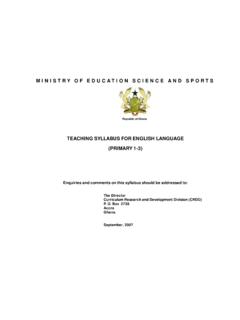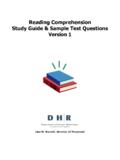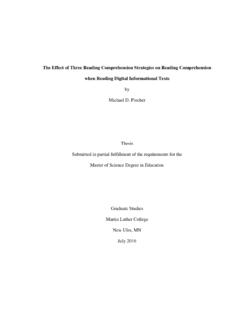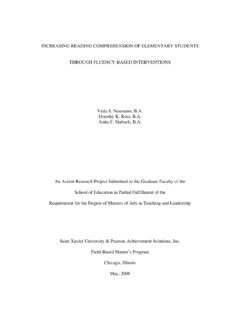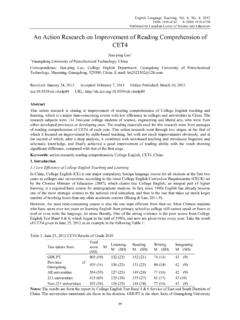Transcription of UPSC CSAT – READING COMPREHENSION
1 UPSC CSAT READING COMPREHENSION2010 Atul LandeSynergy Study Point07/12/2010 UPSC CSAT READING STUDY POINTPage 2 CONTENTSI ntroduction ..3 Types of of different Questions ..5 Sample Passages ..9 Important Tips ..14 UPSC CSAT READING STUDY POINTPage 3 READING COMPREHENSIONI ntroductionReading comprehensionquestions measure your ability to read with understanding. This type of question explores your ability to analyze a written passage from different perspectives as ability to recognize explicitly stated elements in the passage to understand the assumptions underlying statements or arguments in the passage also the implications of those statements or passages are drawn from a variety of academic disciplines within the humanities, natural sciences , and social sciences . Based on a general analysis, most likely the topics will address one of the 3 areas described below. Each type of passage needs a slightly different optimum test-taking strategy.
2 Regardless of what topic you encounter, you can rest assured that everything you need to know will be included in the passage. CSE will try to minimize the chances of giving someone with previous exposure to a particular topic an unfair advantage over others taking the same version of the Science Passages: These passages deal with topics including biology, chemistry, and medicine. You should approach them by doing an initial quick READING /skimming of the text. The mail aim is to understand how the passage is structured and to analyze its outline. Passages of this type are often slightly difficult to understand but are also very factual and straightforward. Hence, such passages will likely provide the easiest READING COMPREHENSION questions you will encounter. There will be factual questions and the answers can be seen in the passage in a very straight forward Social science passages: These passages deal with topics such as history, politics, and geography.
3 It can be seen that these passages are quite interesting to read and that is the reason you can have questions based on inferences. Hence, you must read these passages slowly in order to deal with the Business passages: Business passages involve very difficult structures, and present questions that require you to infer information and even to determine the authors' thoughts and opinions. They need to be read slowly and carefully. Frequently, business passages also include compound words and complex language which we do not use in our day to day conversation. Don't get distracted when you run into such terms. They are not very difficult to decipher if you break them down and examine each of their CSAT STUDY POINTT ypes of QuestionsWith thisa very high level classification, let us now look at the different types of questions, These questions theneed to be carefulbecauseFactual Questions Inference questionsyour ability todrawjudgment about theauthor'smight drawInference Questions Like inferencequestions,explicitly mentionedinformation given inpassageApplying Information Main ideaquestionsrather a difficulttypethe passage.
4 It doescentral Idea Questions Questions of thistypepassage. TheyrequireSupporting IdeaQuestions These questionsexaminedetermine what rolespecificLogical Questions The aspirant will askrule of negativity torather than QuestionsUPSC CSAT READING COMPREHENSIONa very high level classification, let us now look at the different types of questions, easiest ones to answer, but also the most timeconsumingbecausethey often contain very close not test your knowledge of explicitly-citedfacts,drawconclusions. These questions may even askyouauthor'sopinions, or to guess what furtherconclusionsquestions,applying information questions deal withtopicsin the passage. This type of question asksyouinthe passage and logically apply it to a contextQuestionsquestionsask the aspirant to identify the passage'soveralltypeof questions as all of the answer choices havebeennot mean that every one of them can becalledtypefocus on specific ideas or pieces of informationpresentedrequirea more focused READING than do main ideaquestionsQuestionsexamineyour ability to analyze the structure of thepassagespecificcomponents play in the wholeto describe the tone of the passage.
5 You need toapplyfind the correct choice. Mostly the tone ispositivePage 4a very high level classification, let us now look at the different types of questions, consuming. Youfacts,but ratheryouto make aconclusionsthe authortopicsthat are notyouto take theoutside of theoveralltheme. It isbeendiscussed incalledthe passage'spresentedin toapplythe samepositiveor neutralUPSC CSAT READING STUDY POINTPage 5 Structure of different QuestionsLet us look at the structure of the questions asked in the above mentioned types. A. Factual Question:These questions are based on the straight facts provided in the passage and can be like -What are the two methods mentioned by the author for analysis?-Which institute provides the base for research of neurological diseases? B. Inference Questions:Inference questions might look like -Based on the information given in the passage, it can be reasonably inferred that Government is thinking of finalizing which of the following proposal-The author of the passage would be most likely to agree with which of the following statements?
6 -The author of the passage would most likely agree with which of the following statements?The trick to solve inference questions is to stick closely to the wording of the passage and to keep your logic very clear. Inferences are the statements that must be true based on the facts. These are common questions seen in the examinations where READING COMPREHENSION is an important subject (like CSE)C. Appling Information:These questions are slightly more complex than the previous types. They require you to figure out what the passage states about a particular topic, and then apply that information to answer choices that contain new information. These questions do not appear as frequently as the previous three. Some possible questions of this type include:-Which of the following situations is most similar to the economic situation described in the second paragraph? -The Policy referred in the paragraph is most likely to suit which sector from the following?
7 You need to take the same approach to this type of question as you take with inference questions. However it will require an ability of making a larger logical conclusion. These questions test your ability to recognize the structure of an argument or an idea, and then apply the same structure in a different context. UPSC CSAT READING STUDY POINTPage 6D. Main Idea Questions:These questions revolve around the basic theme of the passage. You need to understand the idea or concept which the passage speaks about. In most cases, the main idea will be expressed in one or two sentences in the first paragraph. Occasionally it may be expressed in the final paragraph or, rarely, in an interior paragraph. Sometimes the main idea is never explicitly stated. If you cannot locate a clear theme, it is usually helpful to go through the passage and determine how it gets derived from first paragraph to the final main ideas questions look like the following:-Which one of the following statements accurately captures the central idea of the passage?
8 -Which would be most appropriate title for the contents of the passage?-Which one of the following most accurately summarizes the passage?-The passage can best be described as which of the following?Main Idea questions are the most common questions asked. Hence it is advisable that you summarize the idea of the passage in your words, on a scrap paper, while you complete the READING of the passage. This will avoid your temptation to with the incorrect but tempting answers. Such answers normally contain the central idea but with an additional Supporting Idea Questions:These questions are based on specific concepts or examples provided in the passage and therefore need more detailed understanding of the passage. Typically the questions are as follows -According to the passage, the author believes in which of the following theories?-According to the passage the current trends of economy can be characterized as-Which government initiative is most fruitful since last five year s plan, according to the passage?
9 UPSC CSAT READING STUDY POINTPage 7 Answers to such questions are always the statements in the paragraph. Identify the Key-words from the question and read the passage around these keywords. For example, the question asks for Current Trends of Economy, so look for these words in the passage. Usually you will be able to find the statement which says the same thing as that of the choices and the answer will come directly. F. Logical Questions:Here you will determine the role of a specific component in the context of entire passage. Typically the question will be as below -Why author refers to the Supply Chain Theory mentioned in the second paragraph?G. Tone Questions: These questions will ask you to draw a conclusion about author s view or passage, based on the language used in the passage. For example -What is the author s view towards current economy?-Which of the following best describes the passage? READING COMPREHENSION questions are not at all like Quantitative questions, in which the correctness of the best response can be proved with the help of a mathematical formula.
10 There are no specific rules that can be applicable to COMPREHENSION questions. For instance, consider a central-idea question. A typical second-best answer choice might incorporate the passage's central idea but go further to give a broader approach than the passage itself covers. Hence there is a fundamental difference between the best answer choice and the CSAT STUDY POINTS teps to Follow:Read the psssage analyticallyAssess the questionUse the passage to answerUPSC CSAT READING COMPREHENSIONRead the psssage analyticallyForm your analysis. Note ot down. Note the central idea of the the questionSee in which of the above mentioed type the question fall into. Your strategy will differ from type to typeUse the passage to answerInstead of giving the answers based on your memory, read the passage. It is like open book test. take an extra minute and give right 8 Form your analysis. Note ot down.
